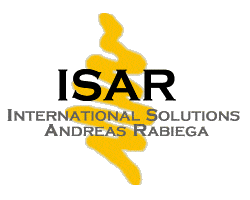Quality management and ISO certifications
Quality and project management
Quality management (QM) is on everyone's lips. QM based on the ISO-9001 standard stands for improvement measures of a product or a process in the quality management system (QMS). This QMS is clearly aligned with the requirements of internal and external customers, if the approach even includes Total Quality Management (TQM).
According to ISO-9001 (based on ISO-9000ff), the standard contains seven principles:
- Customer orientation and thus economic success
- Leadership also leadership culture in the company
- Involvement of people, i.e. internal and external customers
- Process-oriented approach, i.e. not only the finished product/service counts
- Improvement i.e. continuous improvement process in the company (CIP)
- Fact-based decision making clearly replaces emotional decisions
- Relationship management i.e. all stakeholders are included in the processes
- The most important goal of the QMS to sustain your business is to meet and exceed customer expectations. Here, the Six Sigma approach can serve as a template.
- Managers must be role models and ensure that corporate policy can be implemented through achievable goals and measures. Employees are to be included as an important resource.
- Competent and committed employees are the be-all and end-all for any organization to achieve quality goals. This must be promoted:
- Continuous communication within the company on all channels
- Recognition of your employees' suggestions for improvement and their promotion
- Evaluation of employee satisfaction
- Further training, workshops and discussions with the participation of your employees
- Every company or organization is shaped by a multitude of processes. Therefore, the process-oriented approach is guiding. All processes of the company must be coordinated with each other
- Companies that are successful on the market make sure that they constantly optimise their services, processes and products. Of course, some methods are needed to achieve CIP:
- Error analysis
- Establish regular quality circles
- Review all suggestions for improvement from employees
- Requesting feedback from customers and evaluating it methodically
- Set up audits
- In our complex environment, all decisions are accompanied by uncertainty, because we cannot afford any mistakes. It is therefore essential to analyse and weigh up all relevant aspects, causes, risks and their effects.
- Creation and use of key figures also with the help of the Balanced Scorecard
- Ensure accurate and correct data
- Identify reliable staff to collect data
- Make decisions only on the basis of the data and evidence collected
- Use of all experience of all employees
- In addition to customer orientation, all stakeholders must be included in your decisions. That means systematically identifying the requirements of customers and stakeholders.
- Include knowledge of all stakeholders
- Recognize and use common goals and development potentials
- Identifying and exploiting common risks and opportunities
- Aiming for higher added value by means of new and old knowledge and the use of all resources
- Optimize the supply chain in all areas
We accompany you to increase your quality.
We train your QMB.
The QMB in the organization has a more moderating role and keeps the overview in the improvement of the processes. The QMB advises and supports all department heads in their endeavours. Naturally, the QMB aligns the goals of the QMS with the strategies and objectives of the organization. Therefore, the QMB must be well versed in processes, methods, ISO-9001 but also TQM. You are already familiar with the basics of quality management (e.g. on the basis of ISO-9001) and now want to further qualify as a QMB.
Basics of quality management
Seven Principles of Quality Management
o Customer Orientation
o Leadership
o Involvement of People
o Process Oriented Approach
o Improvement
o Fact Based Decision Making
o Relationship Management
Management tools and basics of process management
o Diagrams and network plans
Development, importance and benefits of a management system
Standards and contexts
o ISO 9000ff
o ISO 9001:2015 and the process-oriented approach
High Level Structure (HLS)
o ISO 9004:2018
Tasks in QM
o From quality planning to quality assurance to the establishment of a QMS
The QMB and the role in the company
o Responsibilities, powers and tasks
o Transfer QM goals to the QMS
o Prepare audits
o Evaluate risks and opportunities
o Secure knowledge in the company
Acquire methodological competence
o Learn project management
o Learn presentation techniques
o Learn creative techniques
o Introduce CIP
In (unfortunately) far too many companies, rigid hierarchies and rigid distribution of tasks still prevail. But the world we live in is changing. Life has become faster, more varied and flexible. Complexity, especially in professional life, has become a problem for many of us. Thus, the old classic project structures today quickly reach their limits. Especially within the communication with customers and changing wishes to the product or service. The changed conditions lead us to agile project management. KANBAN or SCRUM are the new methods of agile project management with which we work.
In classic project management, the desired or specified result and scope are usually fixed. The time frame and the use of resources are variable. This becomes particularly clear when the resources are not sufficient and, for example, additional specialist personnel have to be involved. The costs increase, the time frame is lost from view.
Agile project management puts the emphasis the other way around. The time frame and resources are defined and the result is subject to constant control and also changes during the duration of the project. The customer's ideas can now be better incorporated. The value of the project is thus the focus and no longer the project plan.
This becomes clear in the reduction of documentation. In classic project management, documentation plays a very important role. Starting with the work breakdown structure (WBS) up to the last work package. However, it has often turned out that the customer is interested in the result and not in reports. So what is stopping us from adapting the documentation to the result? As well as the time spent?
Two agile project methods that successfully manage the project or a process. They have rules that make it possible to meet new requirements and inform all project members about the progress of the project. In agile projects, all project-relevant parts are worked on simultaneously.
SCRUM
SCRUM defines three roles: SCRUM Master, Product Owner, and Development Team. All three work together on the project and fulfill their defined tasks. In the daily SCRUM meeting, the product owner explains the results of discussions with customers or other stakeholders. The development team describes progress and problems. The tasks of the SCRUM master are to monitor the process and to adhere to the rules. In the predefined timeframe, the complete results are to be presented and communicated to the customer. Of course, the product owner has the last word.
KANBAN
Remember Post-It's? According to KANBAN, all tasks are recorded on a Post-It and managed on a wall or board visible to everyone. This visualization serves as a transparent visualization of the tasks and their processing status. Each team member independently takes over a task from this. Rules ensure that the progress in the completion is visible. A rule can, for example, define how a restriction of the maximum number of tasks that can be processed simultaneously is controlled. This ensures that no task is forgotten or not processed.
Of course, the system can also be designed online with virtual Post It's e.g. with One-Note from Microsoft or via Share Point.
We will gladly inform you about the introduction of Share Point, Office 356 and/or One-Note in your company and set up these systems for you!
design thinking
Design thinking is a concept of thinking about our work in a new or different way. Design Thinking may also be used to analyze process problems or to develop innovative solutions. You learn methods during their application and intuitively come to fast and innovative results.
The Six Phases of Design Thinking
First Phase: Do you understand the topic?
o Get a shared sense and understanding of your topic.
o Graspthe overall context and think broadly. You will see more!
o Consider all areas and to all those affected by your issue.
Second phase: Observe!
o Do you understand the users' environment ...
o ... to tap into their needs?
o Develop empathy instead of interpreting your customers' needs.
Third phase: develop a challenge
o What conclusions do you draw from the Understanding and Observing phases?
o Can you agree together on the central challenge?
Fourth Phase: Generate Ideas
o Use creativity techniques.
o Use the diversity of your team and generate functional solutions.
o Finally, focus on one idea.
Fifth Phase: Develop Prototypes
o Make ideas tangible, experiential, and communicable.
o Prototypes are opportunities to engage in conversation with the user.
o Structured doing instead of endless discussions.
Sixth phase: Test your results
o Are your ideas accepted by the target group?
o What results do the testers or users come to?
o Continue to develop your concept until you have found the best solution.
International project management
International projects and projects with international teams are a great challenge. Planning, coordination and control have to be performed in an international context and in front of an intercultural environment.
Goals, approach, consideration of risks and expectations of the project and its members can be highly diverse. For you as a project manager and staff member, this means having a high level of social and intercultural competence to moderate differences in communication and behavior and to avoid conflicts and misunderstandings. But recognize and use the previously undiscovered strengths and synergies of international teams.
- Project management in an international environment
- Cultural influences and their effects on the project
- Risk management in international projects
- Dealing with different expectations and hierarchies
- Intercultural communication and the direct approach in Germany
- Trust and relationship management in an international environment
Deal sensitively with cultural differences in behaviour and communication. Use the synergy potentials in the diversity of the project members. Learn to be aware of your own behaviour and create trusting relationships. You will notice that international teams can have different dynamics than you are used to. Where are the fier stains?
What is a trademark?
A registered trademark basically serves to distinguish and protect the goods and/or services of a company in competition. Letters and words, numbers and multimedia signs, images, colours, holograms or sounds can be protected.
Trade mark protection arises with the registration of your trade mark in the register of the DPMA. A trade mark may already come into existence through intensive use of a sign in business transactions or through general awareness.
Exclusive right of use
Upon registration in the register of the DPMA, you as the owner acquire the exclusive right to use your trade mark for your protected goods and services. You are also free to sell your trade mark or to grant a right of use (trade mark licence). A trade mark can be used forever.
Steps to Trademark Registration
- We help you search
- We help you obtain and complete the necessary paperwork
- We educate you about applicable fees
- We register your trademark(s)
- We avoid obstacles to protection that prevent registration of your trademark
The bureaucracy and the abundance of laws in Germany are incomparable. For you, it is important to never lose track of all the current laws. This is not a matter of course, because who deals with legal issues in addition to their main business?
Already when opening a gastronomic business you have to consider many regulations. You should definitely inform yourself in advance about applicable laws, regulations and ordinances. As is the case everywhere, ignorance is no excuse in the restaurant business.
- The rights of the guests
- Hospitality Act
- Obligation to post legislation
- Price Indication Ordinance
- Beer supply contract
- Ordinance on dispensing equipment
- Food Hygiene Regulation
- HACCP
- Blackout dates
- Working (Time) Protection Act
- Youth (Labour) Protection Act
- Training regulations
Anyone who commits misdemeanours or criminal offences must answer in any case. We want to protect you from this and from making mistakes.
We pay particular attention to the Occupational Health and Safety Act and labour law. Whatever you want to know, talk to us
Events are among the most important instruments of experience-oriented communication. But not all events are the same. The enthusiasm factor as well as the perfect, creative design of the programme, the staging, decoration, catering, guest management etc. are decisive for success. Do you organise or plan events?
Already at the planning stage, various legal problems have to be considered:
- Concept of the event
- Event law
- Protection and liability law
- Involved
- Organiser
- Visitors
- Operators and performers etc.
- Contract law
- Contract design and relations
- Types of contracts and breaches
- Limitations of liability
- Contractual insurance obligations
- tortious liability
- Tort Liability
- Liability for third parties
- Civil law protection of neighbours
- Limitation of liability through choice of legal form
- underwriting
- Types of insurance and insurance law
- Copyright, ancillary copyright and personality rights
- Trademarks. And trademark rights
- Competition law
Which contractual particularities do you have to pay attention to and which should you clarify in advance? You can see from this incomplete list that you have to think of many things and, if necessary, safeguard them.
We want to find out and apply the case law that applies to you.

As an auditor we prepare you for the ISO 9001 certification!
Together with you, we ensure the quality in the company or expand it further.
According to ISO-9001, the fulfilment of the specified requirements is measured. You already determine in customer contact whether your company delivers quality or not. However, some parts of your company may be of high quality, but others may not. But quality should be present in all processes up to the sale of your product or service. According to ISO-9001 (based on ISO-9000ff), the standard includes seven principles.
Quality Management Representative (QMB)

Contact
- +49 171 710 44 17
- andreas.rabiega [@] international-solutions.org
Write to me
simply make contact and get started





